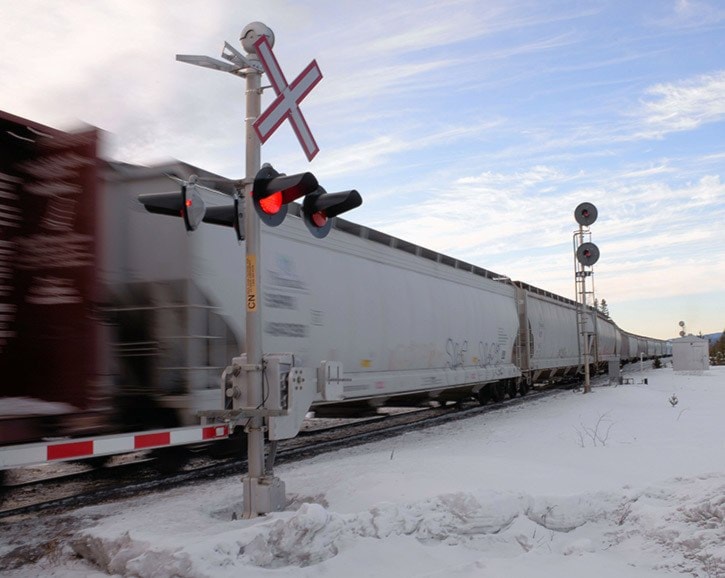Civic leaders from across the North are questioning the Canadian National Railway’s ability to effectively respond to rail disasters in the region, and say the transportation giant’s latest emergency plan places too much responsibility on local personnel ill-equipped to handle such incidents.
The issue was front and center at a March 4 meeting of Smithers council, where Lee Nelson, senior dangerous goods officer for Canadian National (CN), was grilled on the company’s safety practices and emergency planning process. While Nelson’s presentation on dangerous goods and the safety measures CN takes when transporting them was extensive, it didn’t allay the concerns of at least one local official.
“I believe we (all that were present) felt that CN was passing the buck as far as taking responsibility for the safe transportation of hazardous and dangerous goods,” Jim McBride, director of protective services and fire chief for the Village of Burns Lake, said in wake of the Smithers meeting.
McBride added that in his opinion, CN clearly expects local first responders to be the ‘first line of defense’ in any emergency involving hazardous goods, and remain on the front lines until hazardous goods specialists arrive.
Unfortunately for northern residents, says McBride, that help could be a long time coming. According to Nelson, he said, CN’s closest emergency response centres are located in Vancouver, Calgary, and Edmonton – many hours, if not days, away from communities along the railway’s North Line.
“From my perspective, if we have such an incident as Lac-Megantic, Quebec had, we will be on our own for at least 24 to 36 hours before any real material assistance comes from CN,” he stated.
McBride feels that CN’s expectation that local emergency crews can respond effectively to derailments involving hazardous materials is unrealistic. Small town fire departments such as the one in Burns Lake, he said, simply don’t have the training or equipment to deal with incidents of this type.
“The Burns Lake fire/rescue department presently has five members who successfully completed a 24-hour ‘First Responder Operations Hazardous Materials Training’ course in May of last year,” he noted. “The knowledge gained from this offering only goes to the level of awareness and preparedness in the event of a Hazmat (Hazardous Materials) incident. It does not go into, or certify, these individuals in the operational side of an incident.
“In order to operational,” McBride continued, “you have to have all the necessary Personal Protective Clothing (PPC) and breathing apparatus that would protect the individual from whatever the hazardous product is. Given the various types of PPC required… (It) would be a very expense undertaking to provide these types of materials.”
If a hazardous material spill were to occur in the Burns Lake Volunteer Fire Department’s area of operations, McBride said, local firefighters might not be able to do much more than “cordon off the area and prevent the public from entering.
“My primary concern at such a scene is the safety of all fire department members on scene,” he stressed. “Everything else is secondary.”
McBride said that given the number of serious derailments in Canada and the US in recent months, he would like CN to become more involved in training – and perhaps equipping – local emergency personnel.
“I’d like CN to take a more proactive role in the education of all the first responders they expect to see responding to incidents along their rail lines,” he continued, “(and) provide or centralize a stockpile of the necessary materials to equipment departments such as ours to safely initiate some sort of response to eliminate or neutralize the problem.”
The issues of rail safety and CN’s ability to respond to derailments involving hazardous materials are not new.
Fire chiefs from communities throughout the Regional District of Bulkley-Nechako voiced their concerns during a conference call in January. Several noted that CN’s March 2013 emergency response plan suggests the railway will rely on “local emergency personnel” (i.e., firefighters and paramedics) for rescue services, medical aid, and even site decontamination in the event of derailment involving hazardous materials.
They also expressed disappointment that CN didn’t involve them in development of the document.
